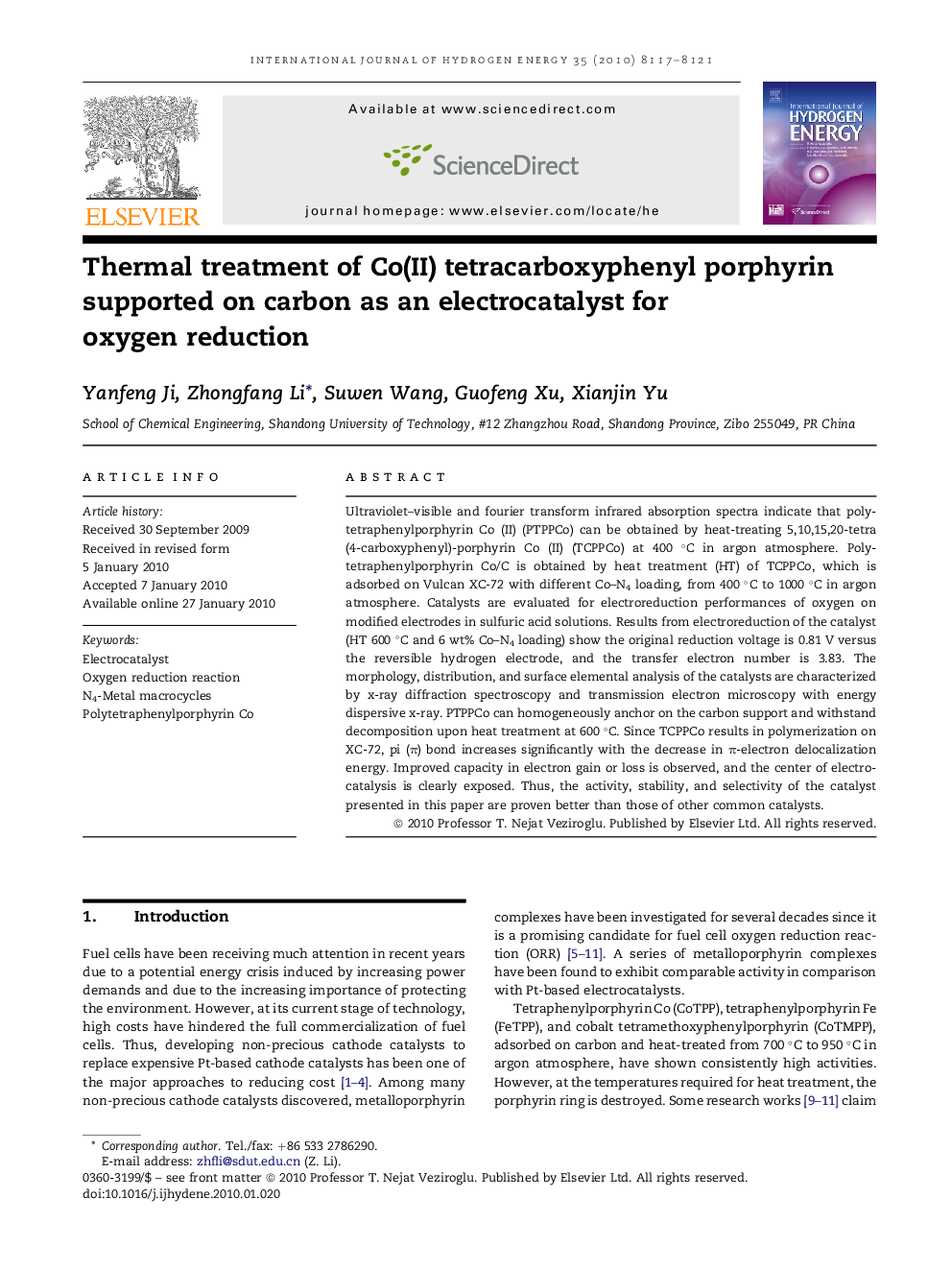| Article ID | Journal | Published Year | Pages | File Type |
|---|---|---|---|---|
| 1277996 | International Journal of Hydrogen Energy | 2010 | 5 Pages |
Ultraviolet–visible and fourier transform infrared absorption spectra indicate that polytetraphenylporphyrin Co (II) (PTPPCo) can be obtained by heat-treating 5,10,15,20-tetra (4-carboxyphenyl)-porphyrin Co (II) (TCPPCo) at 400 °C in argon atmosphere. Polytetraphenylporphyrin Co/C is obtained by heat treatment (HT) of TCPPCo, which is adsorbed on Vulcan XC-72 with different Co–N4 loading, from 400 °C to 1000 °C in argon atmosphere. Catalysts are evaluated for electroreduction performances of oxygen on modified electrodes in sulfuric acid solutions. Results from electroreduction of the catalyst (HT 600 °C and 6 wt% Co–N4 loading) show the original reduction voltage is 0.81 V versus the reversible hydrogen electrode, and the transfer electron number is 3.83. The morphology, distribution, and surface elemental analysis of the catalysts are characterized by x-ray diffraction spectroscopy and transmission electron microscopy with energy dispersive x-ray. PTPPCo can homogeneously anchor on the carbon support and withstand decomposition upon heat treatment at 600 °C. Since TCPPCo results in polymerization on XC-72, pi (π) bond increases significantly with the decrease in π-electron delocalization energy. Improved capacity in electron gain or loss is observed, and the center of electrocatalysis is clearly exposed. Thus, the activity, stability, and selectivity of the catalyst presented in this paper are proven better than those of other common catalysts.
